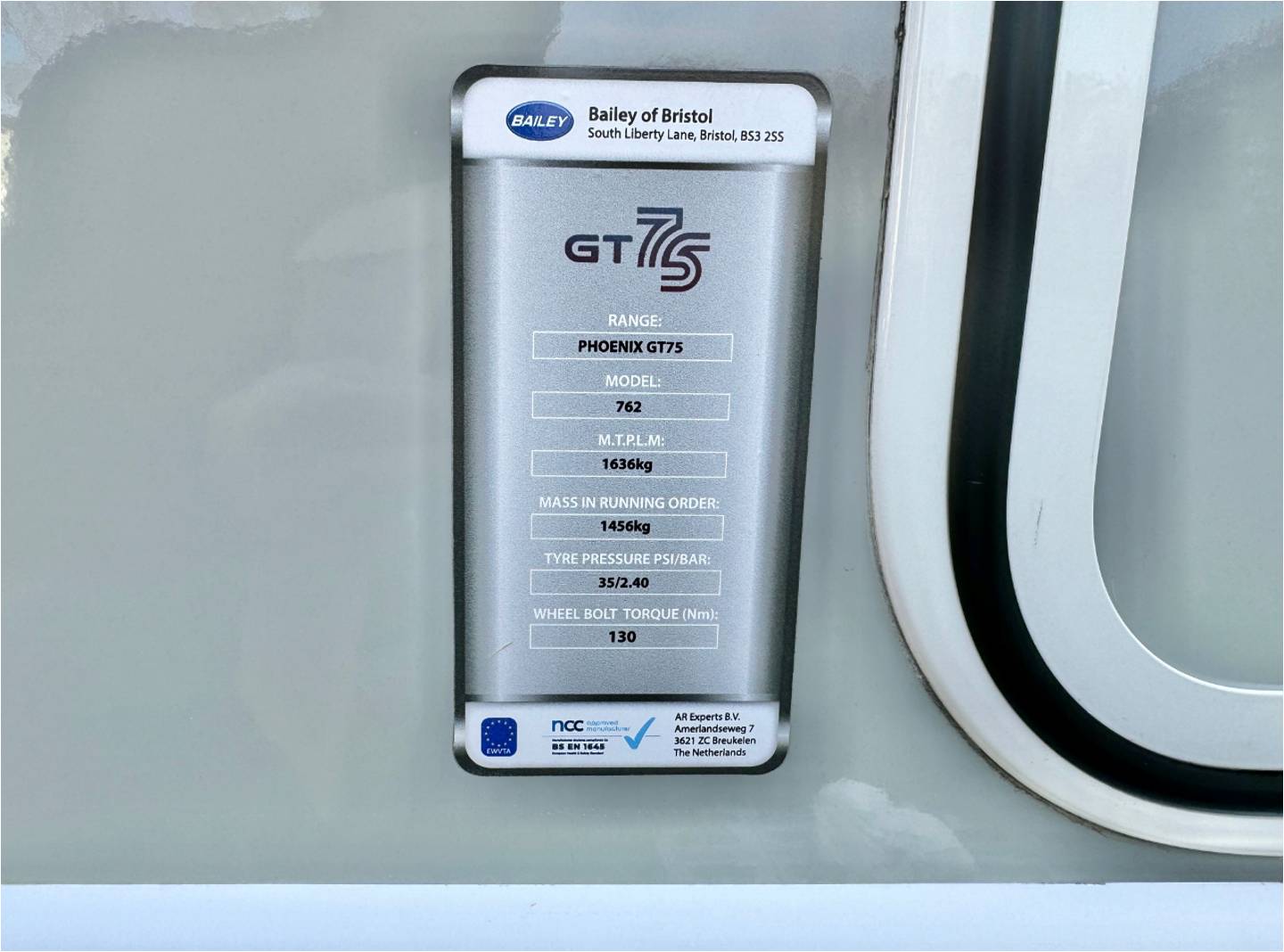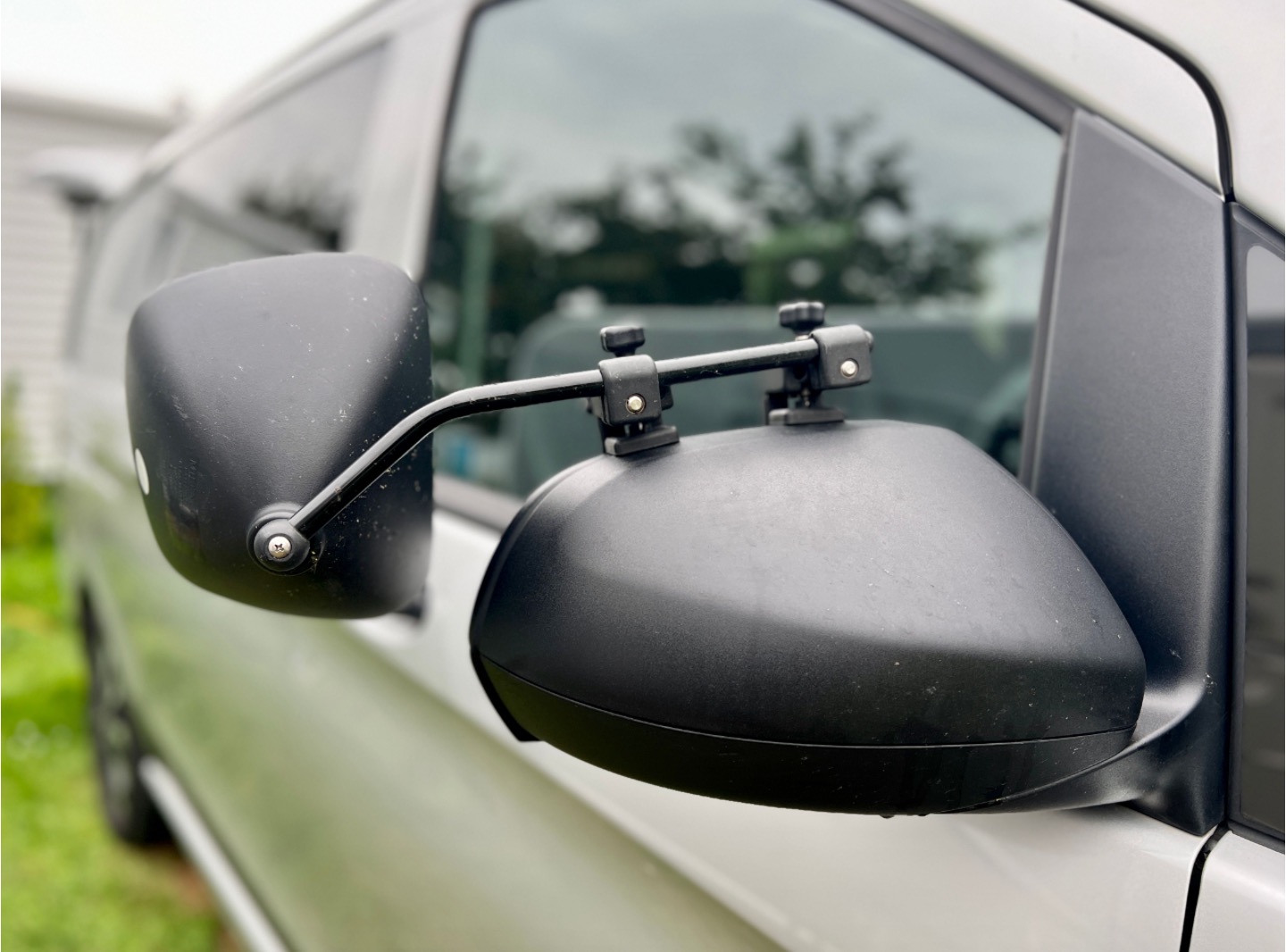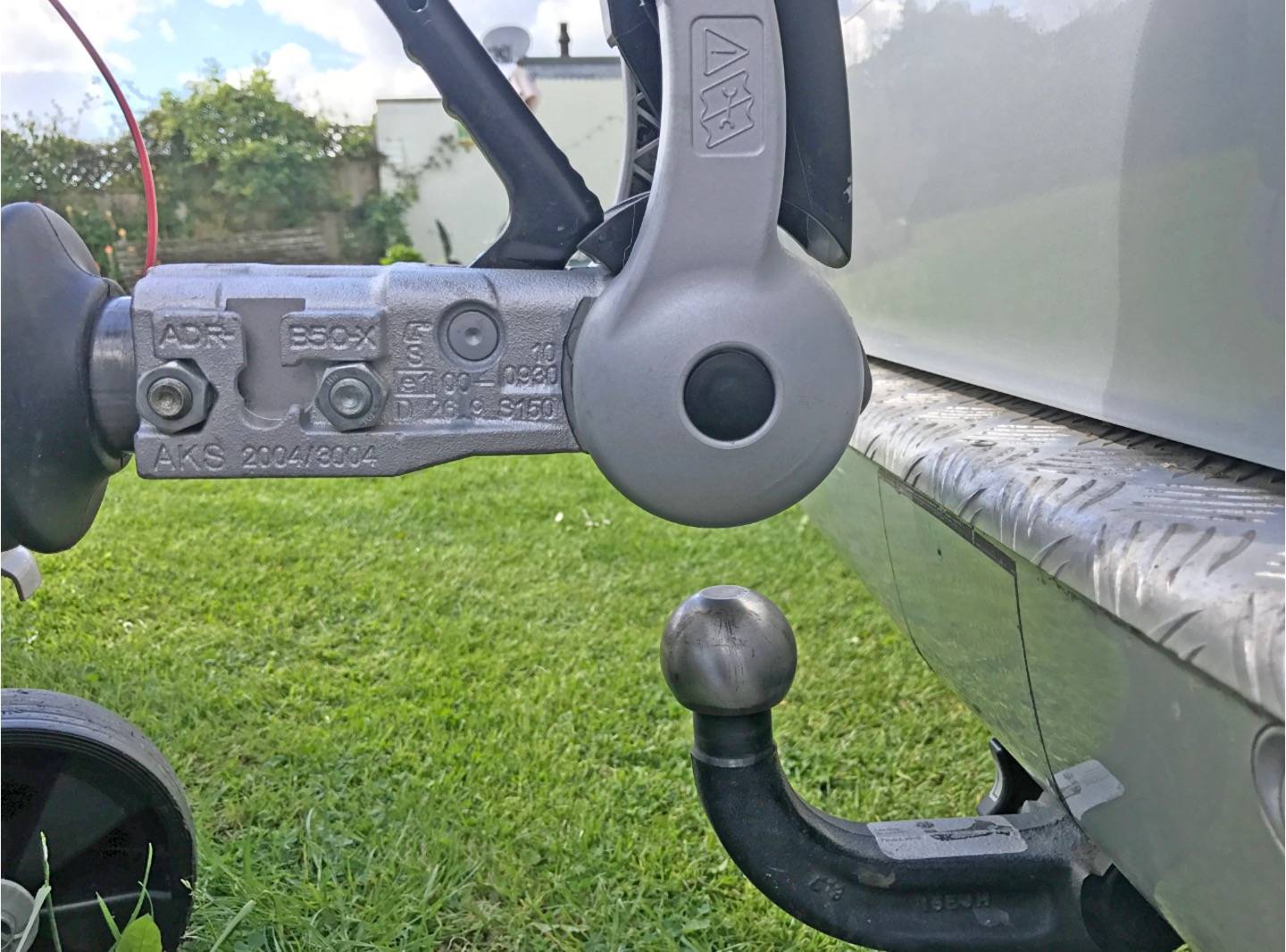Caravan towing: all you need to know
Towing a caravan may seem daunting initially, but a few simple tips can make the journey enjoyable and stress-free
Towing 1,500kg or so of steel and composite panels isn’t something to take lightly, but anyone can safely and effectively tow a caravan with the correct information and training.
We’ll discuss driving licences, the weights you and your car can tow, how loading can affect stability, how multiple reversing tips can be gained during a dedicated towing course, and the rules and regulations that apply to towing a caravan on the UK road network.
Page contents
- Driving licences
- Is there an 85% towing limit for caravans?
- How to load a caravan
- Do I need towing mirrors?
- What is caravan noseweight?
- Choosing the right towbar
- Final thoughts
- About our magazines
Words by Lee Davey
Driving licences
Can I tow a caravan with my driving licence? This is a common question that many potential caravanners are unsure of. The confusion stems from changes made in 1997, 2013, and 2021. However, the most recent changes make licensing much simpler. The information below is relevant to the UK:
Was your licence issued before 1 January, 1997?
If so, you are not affected by the changes made in 1997 or 2021. You’re usually allowed to drive a car and caravan combination up to 8,250kg.
The relevant categories will be displayed on the rear of a photocard driving licence or can be viewed on the DVLA website gov.uk/view-driving-licence
This 8,250kg combined figure may seem high, but it will be influenced by your car's towing limit, which must not be exceeded.
Was your licence issued after 1 January, 1997?
On 16 December, 2021, the E category was automatically added to B licences, meaning car drivers could tow a heavier car and caravan combination without taking the separate B+E test. This means caravans up to 3,500kg can be towed, although the towing limit of your car must not be exceeded.
The DVLA will update your driving licence record to show the entitlement. You do not need to contact the DVLA for this to happen, as it will be done automatically. When you next apply for a new driving licence, you’ll get category BE added to your driving licence.
Is there an 85% towing limit for caravans?

(Photo courtesy of Lee Davey)
Again, some confusion surrounds the 85% towing guideline issued by the Caravan and Motorhome Club and the Camping and Caravan Club. This is a guideline, not a ruling, but it is based on common sense. Both Clubs suggest that the caravan’s maximum weight, or MTPLM, does not exceed 85% of the car’s kerbweight.
Both clubs also state that experienced caravanners could tow up to 100% of this figure, although 85% remains the recommended figure.
Legally, your car can tow a caravan that doesn’t exceed its maximum towing limit. This limit can be found in your handbook or on the V5.
It’s worth double-checking all these figures before purchasing a car or caravan. For example, my daughter asked if she could tow a small caravan with her Vauxhall Corsa. The Corsa’s kerbweight is 1,130kg, so 85% is 960.5kg. However, the maximum towing limit for her car is 850kg (braked).
Is there a maximum width and length when towing a caravan?
Yes. The maximum width for a caravan is 2.55m. If you tow with a vehicle that has a maximum authorised mass (MAM) of less than 3,500kg, the maximum length of the caravan can’t exceed 7m.
It’s worth noting that this refers to the body length, not the shipping length that includes the A-frame. For example, a Bailey Phoenix GT75 762 has a shipping length of 7.86m, but the body length falls within the legal maximum.
Do speed limits differ when towing a caravan?
Yes. UK speed limits when towing a caravan are 50mph on single carriageways and 60mph on dual carriageways and motorways.
Make towing a caravan easier with a Club course
The Camping and Caravanning Club and the Caravan and Motorhome Club offer excellent towing and manoeuvring courses.
These courses are one or two days long and impart all the knowledge needed to tow safely, effectively, and confidently. We can’t recommend this tuition enough, as most people who have experienced the benefits feel the courses should be made compulsory.
What may take years to learn without tuition can be taught within days and mastered at your convenience. Some insurance providers offer discounts for caravanners who have taken such a course.
How to load a caravan
- Correct loading of your caravan is key to its stability on the road.
- Calculate the weight of your caravanning kit, either by weighing boxes/items individually or by consulting the user manual. Any kit fitted since it left the factory should also be considered, such as motor movers, solar panels, etc.
- Place heavy objects (awnings/furniture, etc) over the axle(s) and low down.
- Medium-weight items should be between ankle and waist height, possibly in bed/seat bases or lower cupboards.
- Lighter items, such as clothes, can be stored in upper lockers.
- Do not place heavy items at the extremes of the caravan, as this can create a pendulum effect.
Do I need towing mirrors?

(Photo courtesy of Lee Davey)
- On tight bends, allow more room for the caravan to follow the turn. This can be checked in the towing mirrors.
- Reversing in a straight line. If you see more of the caravan in one mirror, turn the top of the steering wheel towards that mirror. This will bring the caravan into line.
- Towing mirrors can act as a cat’s whiskers. If they protrude more than the caravan, the caravan should fit through the gap if driving forward in a straight line.
- Reversing onto a pitch. Pull past the pitch so the rear of the caravan has room to turn. Turn the bottom of the steering wheel towards the pitch, and the caravan will turn in the correct direction.
What is caravan noseweight?
The noseweight is the weight the caravan’s hitch exerts on the towball when connected and is key for a safe and secure tow.
This weight should typically be between 5% and 7% of the caravan’s MTPLM, or maximum weight. A Milenco noseweight gauge is great for checking this figure. Bathroom scales with a suitably sized length of wood can also be used.
Your towbar will also have a noseweight limit, which is generally shown on a sticker or in the handbook.
Your caravan’s hitch
A caravan's tow hitch attaches your car's towball to the caravan, creating a secure, articulated connection for safe towing. But there's more to the front end of a caravan exterior than just an A-frame and connection.
Hitch-head stabiliser
Nowadays, most caravans (apart from some lightweights, where they’re not needed) come with hitch-head stabilisers. These reduce the likelihood of instability while towing and are generally made by Al-Ko or Winterhoff.
Often, electronic stabiliser systems are also fitted, activating the caravan’s brakes when snaking is detected. Al-Ko calls this ATC (active trailer control), whereas BPW calls it iDC (intelligent drive control).
Breakaway cable
Should your caravan become unhitched, the breakaway cable aims to stop your caravan by applying the brakes.
Jockey wheel
The jockey wheel is an unsung hero, allowing you to manoeuvre the caravan without the car. It also allows you to raise or lower the hitch head for levelling and hitching up.
Read more here in our definitive guide to caravan jockey wheels.
Jockey wheel clamp
This keeps the jockey wheel secure while towing.
Electrics
The caravan’s road lights – brakes, indicators, etc – are connected to your car via a 13-pin plug that fits into a socket next to the towbar. Older tourers have a seven-pin system. Click here for our caravan electrics guide. A 12V supply may be passed to your caravan for the fridge, etc.
Choosing the right towbar

(Photo courtesy of Lee Davey)
There are several types of towbars, which all do the same job but approach the task in different ways.
Find out more about the different types and which one is right for you in our guide to towbars & towballs
Are there any laws surrounding towbars?
- For cars built after 1 August, 1998, towbars must pass Type Approval tests and display a TPE-approved plate or sticker.
- Towbar systems must not obscure a car’s registration plate when not in use.
- British Standard BS AU 114b still applies for tow vehicles built before 1 August, 1998.
Towbar manufacturers
- Westfalia: westfalia-automotive.com/uk
- Witter: witter-towbars.co.uk
- Thule: thule.com
- Tow-Trust: tow-trust.co.uk
- Anker: ankertowbars.com
Final thoughts
Armed with the correct knowledge and information, towing a caravan is far easier than you may think, as a well-weighted outfit makes for a pleasurable journey.
Time spent on loading and noseweight will be rewarded with a stable outfit, so if you’ve purchased a new caravan or you have changed how the kit is stored, it’s worth taking a few moments to double-check things before your onward journey.
Expert Caravan advice to your door!

Caravan magazine has been inspiring caravanners for more than 80 years! We have grown to become a leading authority on caravans, the caravan industry, caravan lifestyle, campsites and caravan travel destinations. We know what our readers want – and that's to make the most of their caravans and their holidays!
Want to know more about Caravan magazine?
About Caravan magazine







Recent Updates
Caravan showers: all you need to know
In this guide, we’ll discuss the different types of showers, how they work, and how to fit an external shower point to your caravan ...
All you need to know about towbars & towballs
Flange, detachable, swan neck, retractable – towbar technology choice is bewildering. Don’t worry. We’ll ...
Caravan WiFi: everything you need to know
Caravan holidays are the ultimate way of getting away from it all, although we sometimes need a link to the ...
Caravan insurance: all you need to know
Navigating the world of caravan insurance can feel like a daunting task. Fear not, as this comprehensive ...
Buying a caravan: what you need to know
Let us guide you through some of the complicated things to think about when first looking at buying a ...
Caravan awnings: a buyers' guide
Caravan awnings are a fantastic addition to any caravan as they are one of the simplest, quickest and most ...
Caravan electrics: avoid tripping out
All caravan owners have overloaded their mains supply at some time. Here’s how to master caravan electrics ...
Caravan heating systems: a quick guide to caravanning warmth
When winter is here, you’ll be glad of a decent caravan heating system if you’re out touring. Here’s how the ...
Caravan damp: a complete guide
There's little more guaranteed to strike fear into the heart of a caravan owner than the word 'damp'. But if ...
Caravan jockey wheels: the definitive guide
A well-functioning caravan jockey wheel can make all the difference to manoeuvring away from the towcar, ...
Other Articles
Caravan cooking recipes
Caravan cookery inspirational ideas. No need to stress out in the kitchen with these quick and easy time-saving dishes ...
Caravan bike racks: a complete guide
Exploring the beautiful surroundings while on a caravan trip is undeniably one of the greatest joys of the ...
Caravan solar panels: all you need to know
Whether you dream of roaming off-grid or just fancy reducing your carbon footprint, fitting solar panels to ...
The ultimate guide to caravan layouts
Choosing the right layout or floorplan of your caravan is an all-important part of the buying process – find ...
A guide to seasonal caravan pitches
Our in-depth guide to finding and securing seasonal caravan pitches on your favourite campsite ...
Caravan weights and payloads: a quick guide
The terminology of caravan weight – MIRO, MTPLM, noseweight, kerbweight, payload, weight plate upgrade – is ...
The ultimate guide to caravan motor movers
Caravan motor movers: everything you need to know about remote control caravan manoeuvring ...
Caravan cleaning: All you need to know
Whether you’re taking the caravan out for the first time or it’s just in need of a spruce up, our guide will ...
18 essential items for camping with your dog
Camping is for the whole family – including our four-legged members. Here's what you'll need to keep your dog ...
14 welly boots for camping trips
It might be April but that won’t stop the rain in the UK, so a pair of comfortable welly boots is still ...